
Timeline:
1790-1863: The Enslavement of Africans
| 1790 Benjamin Banneker, mathematician and compiler of almanacs, is appointed by President George Washington to the District of Columbia Commission, where he works on the survey of Washington, D.C. | ||
| 1791 A slave revolt begins in Haiti and is joined by freedman Toussaint-Louverture. | ||
 | 1793 Congress passes the first Fugitive Slave Act, making it a crime to harbour an escaped slave or to interfere with his or her arrest. | |
| 1793 Eli Whitney invents the cotton gin, which is credited with fixing cotton cultivation, virtually to the exclusion of other crops, in the American South and so helping to institutionalize slavery. | ||
| 1799 Richard Allen becomes the first ordained black minister of the Methodist Episcopal Church. | ||
| 1800 Gabriel (Prosser) plans the first major slave rebellion in U.S. history, massing more than 1,000 armed slaves near Richmond, Virginia. Following the failed revolt, 35 slaves, including Gabriel, are hanged. | ||
| 1816 The African Methodist Episcopal Church is formally organized and consecrates Richard Allen as its first bishop. | ||
| 1817 The American Colonization Society is established to transport freeborn blacks and emancipated slaves to Africa, leading to foundation of a colony that becomes the Republic of Liberia in 1847. | ||
| 1820 The Missouri Compromise provides for Missouri to be admitted to the Union as a slave state, Maine as a free state, and western territories north of Missouri's southern border to be free soil. | ||
| 1821 The African Methodist Episcopal Zion Church, developed from a congregation of blacks who left the John Street Methodist Church in New York City because of discrimination, is formally organized. | ||
| 1822 Freedman Denmark Vesey plans the most extensive slave revolt in U.S. history. The Charleston rebellion is betrayed before the plan can be effected, leading to the hanging of Vesey and 34 others. | ||
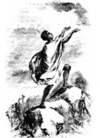 | 1829 Abolitionist David Walker publishes a pamphlet entitled Appeal . . . to the Colored Citizens of the World . . . , calling for a slave revolt. Radical for the time, it is accepted by a small minority of abolitionists. | |
| 1831 William Lloyd Garrison, a white man, begins publishing the antislavery newspaper The Liberator, advocating emancipation for African Americans held in bondage. | ||
 | 1831 Nat Turner leads the only effective, sustained slave rebellion in U.S. history, attracting up to 75 fellow slaves and killing 60 whites. After the defeat of the insurrection, Turner is hanged on November 11. | |
| 1833 The American Anti-Slavery Society, the main activist arm of the abolitionist movement, is founded under the leadership of William Lloyd Garrison. | ||
| 1834 Slavery is abolished in the British Empire. | ||
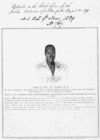 | 1839 Slaves revolt on the Spanish slave ship Amistad in the Caribbean. After their arrest in Long Island Sound, former U.S. president John Quincy Adams successfully defends the rebels before the Supreme Court. | |
| 1840 The Liberty Party holds its first national convention in Albany, New York. In opposition to fellow abolitionist William Lloyd Garrison, members believe in political action to further antislavery goals. | ||
| 1843 In a speech at the national convention of free people of colour, Henry Highland Garnet, abolitionist and clergyman, calls upon slaves to murder their masters. | ||
| 1847 Joseph Jenkins Roberts, the son of free blacks in Virginia, is elected the first president of Liberia. In 1849 he secures British recognition of Liberia as a sovereign nation. | ||
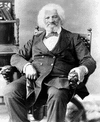 | 1847 Frederick Douglass begins publication of the North Star, an antislavery newspaper, which contributes to his break with abolitionist leader William Lloyd Garrison. | |
| 1848 The Free Soil Party, a minor but influential political party—formed of Barnburners and Whigs—opposed to the extension of slavery into the western territories, nominates former U.S. president Martin Van Buren to head its ticket. | ||
| 1850 Speaking on behalf of the abolitionist movement, Sojourner Truth travels throughout the Midwest, developing a reputation for personal magnetism and drawing large crowds. | ||
| 1850 Harriet Tubman returns to Maryland to guide members of her family to freedom via the Underground Railroad. Later helping more than 300 slaves to escape, she comes to be known as the "Moses of her people." | ||
| 1850 Congress passes a series of compromise measures affecting California, Utah, New Mexico, Texas, and the District of Columbia in an effort to maintain an even balance between free and slave states. Part of the compromise, a new, stricter Fugitive Slave Act, contributes to the spread of the abolitionist movement. | ||
| 1853 Episcopalian minister Alexander Crummell becomes a missionary and teacher in Liberia, advocating a program of religious conversion and economic and social development. | ||
| 1853 William Wells Brown—a former slave, abolitionist, historian, and physician—publishes Clotel, the first novel by an African American. | ||
| 1854 Author Frances E.W. Harper's most popular verse collection, Poems on Miscellaneous Subjects, is published, containing the antislavery poem "Bury Me in a Free Land." | ||
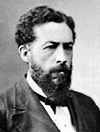 | 1855 John Mercer Langston, a former slave, is elected clerk of Brownhelm Township in Ohio. He is the first black to win an elective political office in the United States. | |
| 1856 Members of the Methodist Episcopal Church found Wilberforce University. After the university is closed during the Civil War, it is bought and reopened by the African Methodist Episcopal Church. | ||
| 1856 In the ongoing contest between pro- and antislavery forces in Kansas, a mob sacks the town of Lawrence, a "hotbed of abolitionism," which leads to retaliation by white abolitionist John Brown at Pottawatomie Creek. | ||
| 1857 In its Dred Scott decision, the U.S. Supreme Court legalizes slavery in all the territories, exacerbating the sectional controversy and pushing the nation toward civil war. | ||
| 1859 Harriet E. Wilson writes Our Nig, a largely autobiographical novel about racism in the North before the Civil War. | ||
| 1859 The U.S. Supreme Court, in Ableman v. Booth, overrules an act by a Wisconsin state court that declared the Fugitive Slave Act of 1850 unconstitutional. | ||
| c. 1859 Martin R. Delany, physician and advocate of black nationalism, leads a party to West Africa to investigate the Niger Delta as a site for settlement of African Americans. | ||
| 1860 After the election of Abraham Lincoln, South Carolina secedes from the Union in December. It is followed in January 1861 by Mississippi, Florida, Alabama, Georgia, and Louisiana, and in February by Texas. As battle lines are drawn, Virginia, North Carolina, Arkansas, and Tennessee also choose to secede. | ||
| 1861 The Civil War begins in Charleston, South Carolina, as the Confederates open fire on Fort Sumter. | ||
| 1861 Harriet Jacobs's Incidents in the Life of a Slave Girl, the first autobiography by a formerly enslaved African American woman, candidly describes her experience of the sexual exploitation that made slavery especially oppressive for black women. | ||
| c. 1861 Pinckney Pinchback runs the Confederate blockade on the Mississippi to reach New Orleans. There he recruits a company of black volunteers for the Union, the Corps d'Afrique. | ||
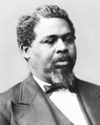 | 1862 Future U.S. congressman Robert Smalls and 12 other slaves seize control of a Confederate armed frigate in Charleston harbour. They turn it over to a Union naval squadron blockading the city. | |
| 1862 The second Confiscation Act is passed, stating that slaves of civilian and military Confederate officials "shall be forever free," enforceable only in areas of the South occupied by the Union Army. | ||
| 1863 President Abraham Lincoln signs the Emancipation Proclamation on January 1. | ||

| Copyright © 2005 Encyclopædia Britannica, Inc. |